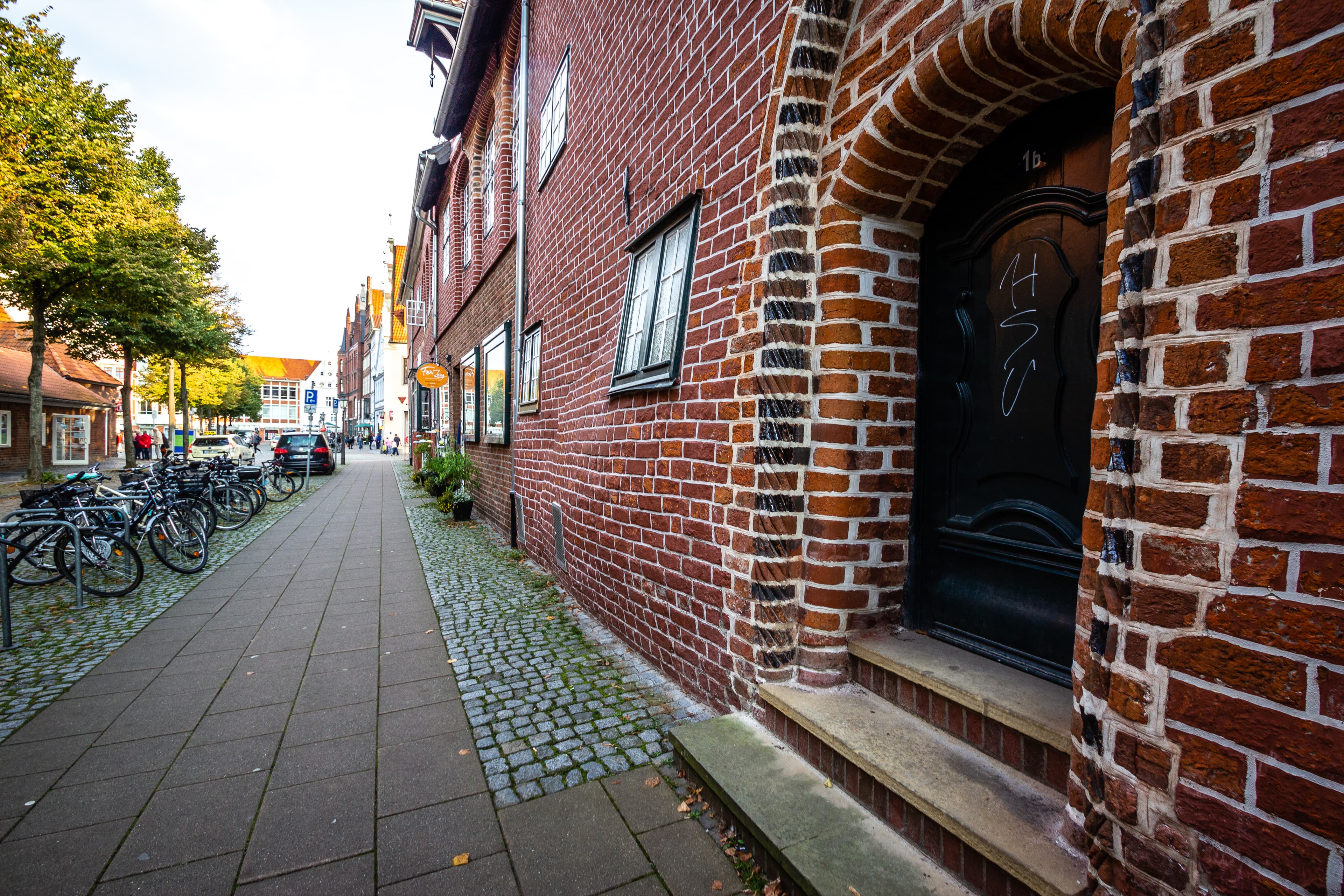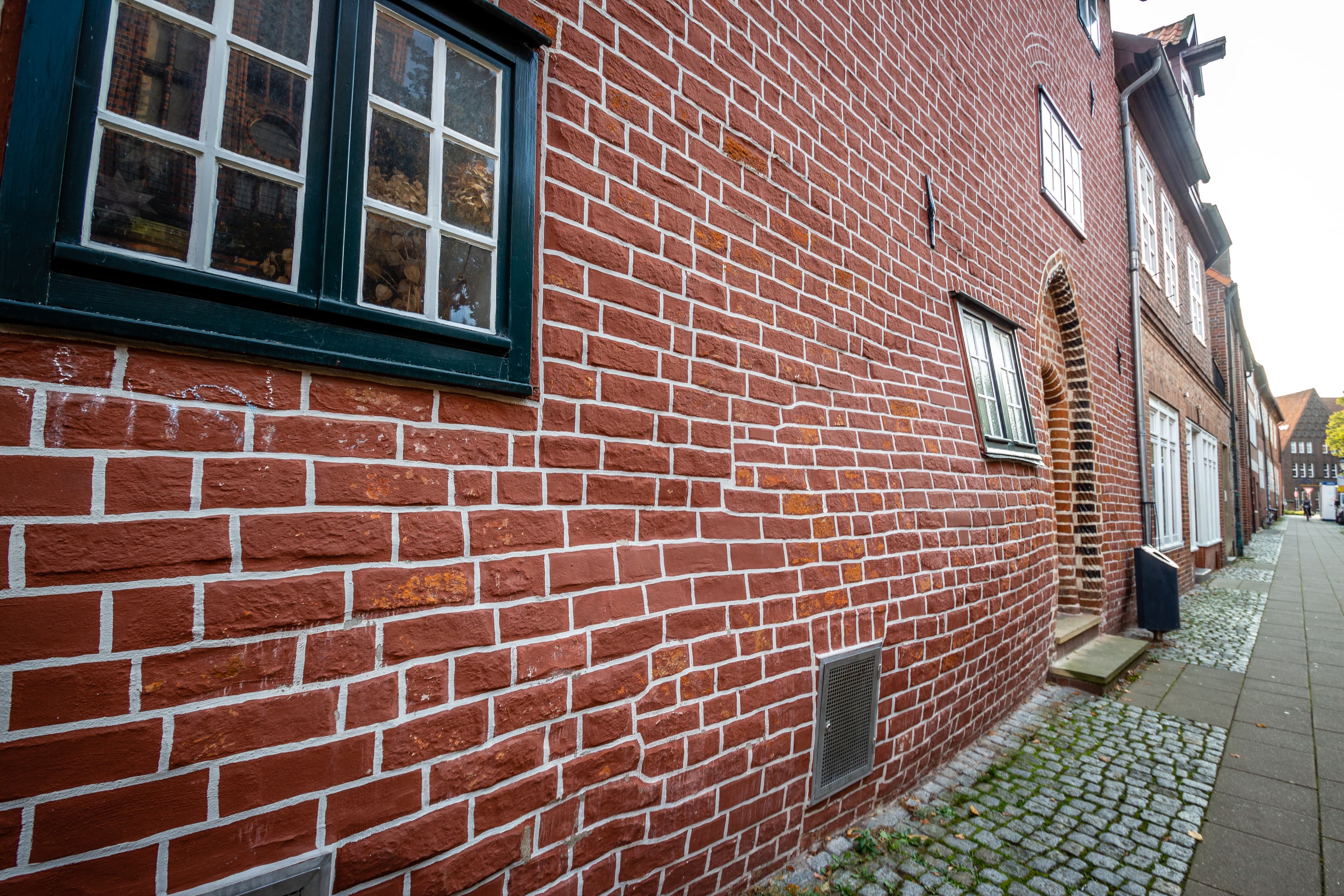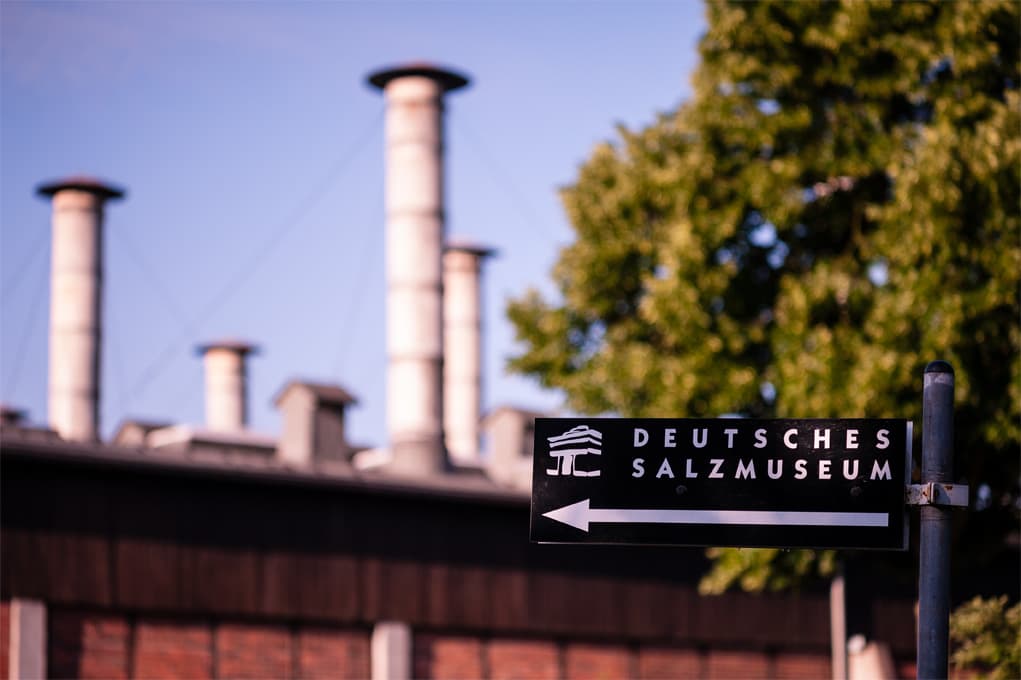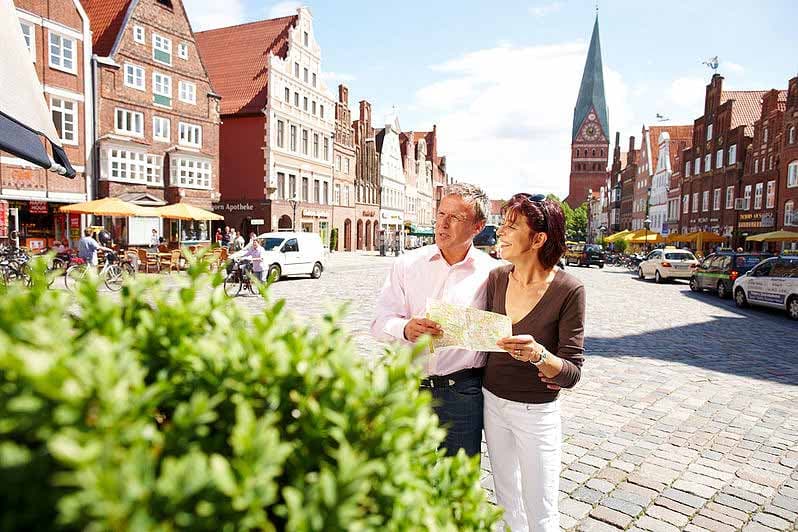©Ulrich von dem Bruch / Lüneburg

©Ulrich von dem Bruch / Lüneburger Heide GmbH

©Ulrich von dem Bruch / Lüneburg

Erfahren Sie alles Wissenswerte über das „Schwangere Haus“ in Lüneburg: seine außergewöhnliche Bauweise, spannende Hintergründe und praktische Besuchertipps.
Geschichte und Besonderheiten des Hauses
Die außergewöhnliche Form der Fassade entstand durch spezielle Baumaterialien, die beim Bau verwendet wurden. Statt herkömmlichem Mörtel verwendeten die Bauherren Anhydrit vom nahegelegenen Kalkberg. Bei Feuchtigkeit wandelte sich dieser Anhydrit zu Gips um und führte so zu einer Volumenzunahme, wodurch die charakteristische Auswölbung entstand.Heute gilt das Gebäude als Symbol für die besondere Baugeschichte Lüneburgs. Übrigens soll es Glück bringen, wenn man die Hand auf den „Bauch“ der Fassade legt.
Wichtigste Fakten über Lüneburg
Lüneburg, die Salz- und Hansestadt in Niedersachsen, blickt auf über 1.000 Jahre Geschichte zurück. Durch den Salzabbau – das sogenannte „weiße Gold“ – erlebte die Stadt im Mittelalter eine Blütezeit, deren Spuren bis heute in ihrer prachtvollen Architektur sichtbar sind.Service-Informationen für Besucher
- Adresse: Waagestraße, 21335 Lüneburg
- Besichtigungszeiten: Jederzeit von außen frei zugänglich (Privatbesitz, kein Zutritt ins Gebäude)
- Eintrittspreis: Kostenlos
Häufig gestellte Fragen (FAQ)
Was macht das Haus so besonders?Es zeichnet sich durch seine ungewöhnliche, gewölbte Fassade aus, die durch spezielle Baumaterialien und deren chemische Reaktion mit Feuchtigkeit entstanden ist.
Kann das Gebäude von innen besichtigt werden?
Nein, es handelt sich um Privatbesitz. Die Fassade ist jedoch öffentlich zugänglich und kann jederzeit betrachtet werden.
Wo finde ich diese Sehenswürdigkeit genau?
In der Waagestraße, mitten in der Altstadt von Lüneburg.




